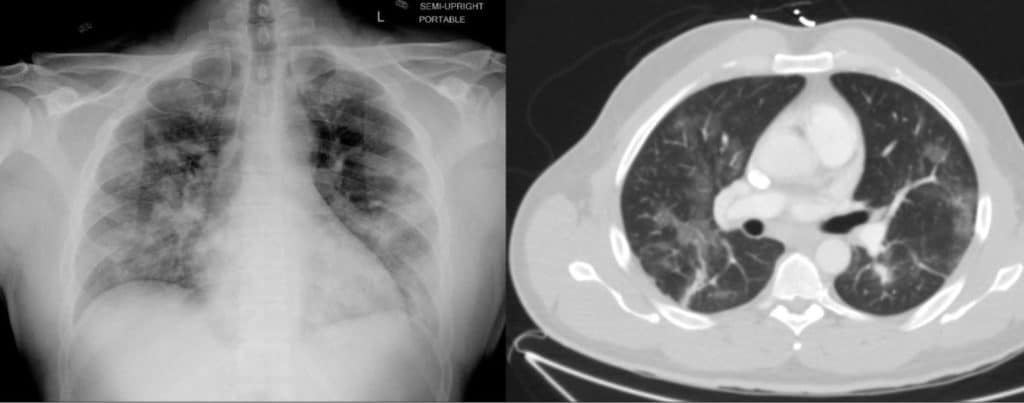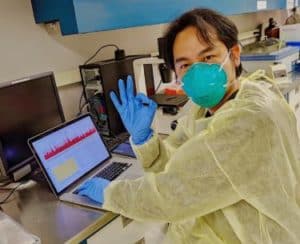
LITTLE ROCK — A national database for patient cancer images at UAMS will become the storage site for COVID-19 clinical images from across the United States and around the globe, including chest x-rays and CT scans of the body.

This week, UAMS also became the first research institution to contribute de-identified images of COVID-19 to the storage site, called The Cancer Imaging Archive. The archive is funded by the National Cancer Institute (NCI) at the National Institutes of Health (NIH).
The archive is led by UAMS’ Fred Prior, Ph.D., professor and chair of the Department of Biomedical Informatics in the College of Medicine.
With Arkansas data being the first to arrive, it will be a unique opportunity for researchers across the U.S. to see how COVID-19 is affecting a rural population.
“Researchers are clamoring for this data,” Prior said. “At UAMS, we want to make sure the unique characteristics of our rural population in Arkansas are represented. Our state’s inclusion is really important as scientists are trying to figure out how this disease is evolving, how it’s impacting different groups of people, and why there are such a wide variety of symptoms and outcomes.”
The majority of the COVID-19 images are chest X-rays, the most commonly used imaging procedure for COVID-19 in the U.S., Prior said. About 20% of UAMS cases also have CT scans, allowing more detailed analyses. In addition, many of the CT scans included the chest, abdomen and pelvis.
“We’re looking at internal organs other than just the lungs, which is important because more and more we’re seeing this disease impacting the kidneys and the liver,” Prior said.

The first batch of published de-identified images comes from 105 UAMS COVID-19 patients and includes a representative sample of the viral genomes found in the patients. The collection and publication of the data was funded by the UAMS Translational Research Institute, which is supported by the NIH National Center for Advancing Translational Sciences, grant UL1TR003107.
The data is publicly available on the archive website: https://www.cancerimagingarchive.net/collections/
“Making this de-identified image and genetic data available nationally is an important step as we work to better understand a disease that’s unlike anything we’ve ever seen,” said Laura James, M.D., director of the Translational Research Institute. “UAMS is helping to lead the way, and we expect there will soon be thousands more patients represented in the imaging database from across the country.”
In addition, she noted, her institute’s Comprehensive Informatics Resource Center, which Prior leads, is helping the NIH National Center for Advancing Translational Sciences (NCATS) build a large central repository for COVID-19 research. That storehouse of data will be cross-linked with the imaging archive.

The 62 NCATS-funded Clinical and Translational Science Award institutions, such as UAMS, have been invited to share their COVID-19 data in the repository, called the National COVID Cohort Collaborative (N3C).
Prior and Ahmad Baghal, M.D., director of the UAMS Arkansas Clinical Data Repository, will pilot test the N3C’s mechanism for linking with UAMS clinical data in the repository and data from The Cancer Imaging Archive.
“We are uniquely positioned to help lead these national efforts,” said Prior, who serves on the NCATS Governance Working Group and Tools Working Group. “The Cancer Imaging Archive was shovel-ready for this sort of project, and UAMS is fortunate to have superb data infrastructure thanks to the support of our UAMS and Translational Research Institute leadership.”
